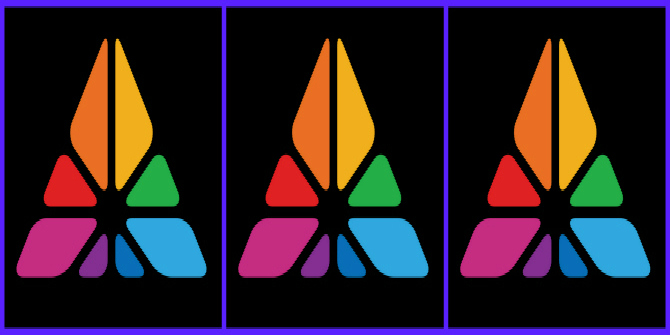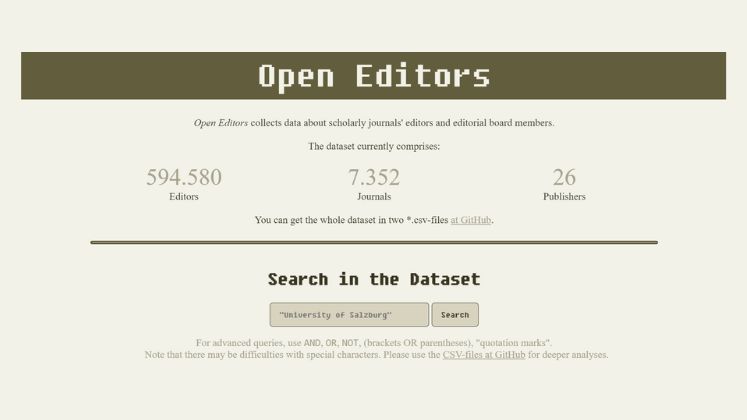
 When we think about the value of journal publishing, we have a tendency to think in terms of costs per article and the potential for new technologies to reduce these costs. In this post, Lucy Montgomery and Cameron Neylon argue that we should instead focus on the social life of journals and the knowledge communities they sustain. Taking this as a starting point they explore how changes to the business model of journal publishing have pushed existing forms of academic social organization to their limits.
When we think about the value of journal publishing, we have a tendency to think in terms of costs per article and the potential for new technologies to reduce these costs. In this post, Lucy Montgomery and Cameron Neylon argue that we should instead focus on the social life of journals and the knowledge communities they sustain. Taking this as a starting point they explore how changes to the business model of journal publishing have pushed existing forms of academic social organization to their limits.
How much does it cost to produce a journal article? Recent claims have varied from $2 to $100 to $2000. It seems to many of us now that this question has gone unanswered for at least two decades, although the truth is, the debate is probably as old as journal publishing itself. In our view, it is time to reframe this stale debate and ask fundamental questions: What are journals for? What kind of value do they create? How can we assess the complex interaction of financial and non-financial exchanges they involve?
In seeking to answer these questions, we found a striking similarity in accounts of journals and publishing: the economic models they employ all focus on publishing as a technology.
Almost every description of the economics of journal publishing puts the publishing process at the centre. They ask how the costs of managing content based goods play out in markets of authors and subscribers. In the political arena, where we debate how our publishing systems should work, this leads us to focus on how the costs of publication technology should be managed and apportioned. For instance, a focus on technology leads some advocates of publishing reform to note that, because the costs of dissemination on the web are low, the cost of publishing should also be low. Conversely, publishers frequently argue that the capital investment requirements involved in updating technology make publishing increasingly more expensive.
Journals should be seen as a technology of social production and not as a communication technology.
The problem of this perspective is that it focuses solely on the costs incurred and not on the value created. In these models, value is determined by what various markets are willing to pay. We should be asking instead, what it is that people value in publishing that they are willing to pay for? What is being created? Who benefits from it? How are these goods being valued differently? On this basis we propose that the value of a well-run journal does not lie simply in providing publication technologies, but in the user community itself. Journals should be seen as a technology of social production and not as a communication technology.
To this end, a different way of understanding journals is through the economics of clubs. Club economic models describe how a community can come together to produce goods that they couldn’t create individually, but from which all community members can benefit. Significantly they predict a number of characteristics for successful clubs. Most importantly, they are size-dependent. Too small, they lack the resources necessary to create the desired good. Too large, there is friction in access to the good (congestion). The classic example being a sports club providing a swimming pool, too few members and you can’t afford to build and maintain the pool, too many and the pool is overcrowded.
Clubs also produce a particular kind of good: “club goods.” These are non-rivalrous, meaning they can be widely shared (up to that point of congestion), but excludable, meaning it is easy to restrict access to members only. On the surface this is a good model of a community subscription journal. Membership is made up of those who read the journal, write for it, and contribute as editors and referees. This overlaps strongly with the group that contributes financially to the costs of producing the journal. Too few authors and readers, and the journal is not viable. Too many, and there is congestion for authors to access editorial time, reviewers and space in the journal. Even with a move to digital online technologies, the costs of production are important in determining when congestion arises.
Furthermore, the good being produced is the knowledge-making community itself. From a social knowledge production perspective this means that the value being created is collective community knowledge. Knowledge production is most efficient when this community, or “knowledge club”, strongly overlaps with the club which makes up the journal.
Journals can exist where this overlap is not strong. Journals like Science and Nature are financially viable and they create a kind of club. However, this is not a knowledge community in any meaningful sense. The authors of an article on the genome of an organism are not producing knowledge in concert with those of an article on the formation of stars. In these cases the “good” being produced is prestige, or brand value. Rather than being knowledge clubs, they are closer to “social network markets”, in which the choices that individuals make, such as where to seek to publish, are driven by the actions of those with higher prestige in the network. Such markets are effective means for extracting resources out of communities.
What practical conclusions can we draw from this model? First, it explains the trajectory of some journals, particularly those that moved online in the mid-90s (fig.1). These journals underwent massive growth, but then declined, a pattern that was mirrored by their Journal Impact Factors (JIF), in this instance a reasonable, if still fundamentally flawed, proxy of prestige. In terms of club economics we surmise that this rapid growth, enabled by web technologies, led to increased congestion, which in turn resulted in the breakdown of the sense of community. This pattern appears to be repeating itself on a much larger scale in the rise and fall of mega-journals like PLOS ONE and Scientific Reports.
Initially PLOS ONE was a “club” of radicals who could afford to experiment with a new publishing model. This resulted in a higher than expected initial JIF and a massive influx of new authors, who were attracted to this (now) “proven” publishing model. Consequently, article processing times expanded (congestion), the initial sense of community became harder to maintain and the influx of articles ultimately reduced the JIF, leading to the flight of authors that were just seeking access to the prestige of the journal. The journal then shifted from a community (if not properly a knowledge club, as the disciplines were too disparate) to a social network market, which it could not sustain.
Scientific Reports follows a similar trajectory, but for different reasons. Initial submissions were not driven by a desire to be radical or progressive, as the concept of a mega-journal was already proven. Rather, Scientific Reports launched as a social network market, providing access to the prestige of the Nature brand. This model in turn became unsustainable, as the journal developed its own reputation and niche, which had been carefully planned through the naming (which does not include the name “Nature”) to avoid any dilution of the existing Nature brand.
What does this mean for Open Access and for initiatives like PlanS? Note that the club-theoretic model is ambivalent about how payments are made. We see similar patterns of growth and decline for subscription and APC journals alike. However the model is arguably better configured to understand how to create knowledge-value efficiently, because it asks how a community can be created and sustained, and how open access to membership can both stimulate and dilute knowledge-making itself.
This blog post is based on the following articles:
Do we need to move from communication technology to user community? A new economic model of the journal as a club, published in Learned Publishing
Social network markets: A new definition of the creative industries, published in the Journal of Cultural Economics
A journal is a club: A new economic model for scholarly publishing, published in Prometheus: Critical Studies in Innovation
Image Credit: eak_kkk via pixabay
Note: This article gives the views of the author, and not the position of the LSE Impact Blog, nor of the London School of Economics. Please review our comments policy if you have any concerns on posting a comment below
About the authors
Lucy Montgomery is Director of the Centre for Culture and Technology at Curtin University, Australia. She is also Director of Research for Knowledge Unlatched Research: a close-knit team of researchers and publishing industry practitioners working together to help realise the possibilities of digital technology and open access for specialist scholarly books and the communities that care about them. Her ORCID iD is: 0000-0001-6551-8140.
Cameron Neylon is Professor of Research Communications, in the Centre for Culture and Technology at Curtin University, and Director of Knowledge Unlatched Research. He was a founding Director of FORCE11 and a contributing author to the altmetrics manifesto, the Panton Principles for Open Data and the Principles for Open Scholarly Infrastructure. He has been a biochemist and a technologist, worked in scholarly publishing as an advocate for open access, and now focuses on studying the changing cultures and institutions of the academy. His ORCID iD is: 0000-0002-0068-716X.










This got me thinking about the ways that exclusivity relates to club prestige. If you open a sports club with a strict 50 member membership limit then it will be seen as the most exclusive place in town. The only people not clamouring to get in would be the hoi polloi who know they really can’t afford the fees. If the membership limits are eased then the club will seem less exclusive and there will be less prestige in being a member. Exclusivity creates demand.
In a similar manner, a journal that has a low bar to entry — such as Open Source! — must seem less exclusive. It would be nice to think that academic researchers publish to disseminate new knowledge to the world but aren’t bragging rights really just as important for most submitters?
Would you rather brag about getting published in Nature or in the Daily Mail?
PS: The ‘figures’ here have me confused. They are described as showing ‘trajectory’ over time. But how is that trajectory measured? Does the vertical axis show Subscribers? Submissions? Profit? Or something completely different?
While I agree with article to a point, what I am afraid you are missing is that that ‘community’ could be made elsewhere and does not solely rely on the medium at hand. This ‘community’ is not contingent on the medium and can be created with video and other more egalitarian forms of scholastic dissemination.
I am currently writing a paper on this exact topic and what baffles me is the lack of understanding that there are ‘intellectuals’ outside the ability to pay for such ‘communities’ who deserve to be part of these exclusive knowledge groups, but who are barred from entry simply because of cost. It is not only wrong but absolutely immoral to sequester those who believe themselves intellectually ‘superior’ to a realm all their own while more deserving intellectual unable to cough up $2,000 for a Journal are left in the academic dark.
The fact that this article is so blatantly ignorant of the fact that these paywalled communities are causing division in the Academic realm and turning intellectuals into ‘haves’ and ‘have nots’ is a disgrace.
Great blog. I hope that your articles received more reaction than this blog seems to have. I’d be interested to know. You are totally correct about normal discourse about journals. And more, your interpretation of the popularity of such journals as Scientific Reports is powerful and insightful. A small scale parallel: I founded a now-quiescent journal “Scholarly and Research Communication” that was enthusiastically embraced by an international group. Slowly submissions vanished as authors found more lively community voices to which they could contribute.
My own statement in line with your thinking (before I was led to it) was this “Scholarly journals are research community-based entities that provide opportunities for members of a knowledge community to contribute peer-certified research thereby strengthening their membership claim. In publishing that research, journals strengthen their role as research community members by augmenting the contribution of their community to society.” I hope you are still active in this arena.